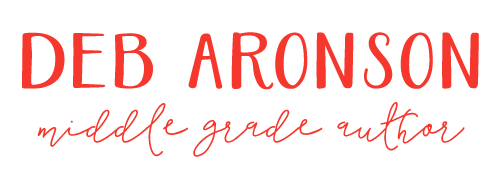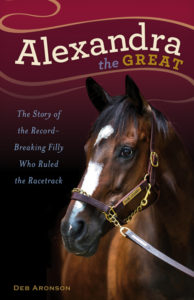Helping Students Learn to Enjoy and Succeed at Reading
NCTE Council Chronicle September 2013
For those who have mastered reading, it is like breathing: they don’t consciously think about how to do, they just do it. For others, though, reading may be anything but unconscious, and can be difficult, frustrating work.
What can teachers do to help students not only enjoy but also succeed at reading?
A new book edited by Diane Stephens, Reading Assessment: Artful Teachers, Successful Students (NCTE 2013), provides answers to this question by showing us real classrooms where effective reading intervention is taking place. Reading Assessment explores what happens when educators commit to knowing their students through assessment and using that knowledge to inform their reading instruction.
“For 40 years, in one setting or another, I’ve been thinking about my students as readers and wondering what is necessary to making reading easier and fun,” says Stephens, Swearingen Chair of Education at the University of South Carolina. She shares her eight-point “Theory of What Matters for Readers” in her book.
The “What Matters” theory or framework focuses less on the mechanics of reading, like sounding out words and grammar, and more on what goes on in a child’s head when she is trying to read. Stephens takes this approach because she believes, “in order for teachers to be helpful, they have to have an idea of what readers do, how reading works, and what to pay attention to.”
Traditionally, struggling readers are urged to sound out each word and answer basic comprehension questions. Stephens encourages teachers to use other techniques, for example, to articulate for students the strategies they themselves use when reading and to help students name the strategies they already possess.
“Ultimately, it takes you getting in touch with your own reading process before you can begin to understand that of your students,” says Erika Cartledge, one of the teachers profiled in Reading Assessment.
“We think we know so much about the reading process but no kid approaches literacy the same way,” says Tim O’Keefe, another teacher featured in the book.
Stephens developed her framework over the course of her career, but it crystallized during work she conducted with a group of 10 reading interventionists from 2007 to 2010. The first three points of the framework are the bedrock upon which the other five points are built.
First, students must understand that the point of reading is to make sense.
Once articulated, this appears self-evident, but Stephens has found that typically a struggling reader is working so hard to sound out words that he doesn’t even realize that he doesn’t understand what he is reading. Without self-monitoring — thinking about what he’s reading and recognizing when something doesn’t make sense — a student can quickly lose the meaning of an entire text.
But, she cautions, “an enormous number of students think what they are supposed to do is get the words right. And no amount of instruction will help if they don’t understand the need to make meaning.”
Second, students must become confident of their ability to make meaning. Struggling readers often “think being a good reader is a gift you have, not something within their power to achieve. They don’t read because they don’t believe they will be successful,” says Stephens.
Third, they must recognize that reading can be fun. Stephens uses as an example the popular Elephant and Piggy books for beginning readers.
“Fifth graders love them. Adults enjoy them. You can get kids hooked on reading these books,” she says.
Stephens’s work showed her that students needed to have in place this three-part theory of themselves as readers before they could effectively make use of problem-solving skills.
She recommends that teachers first look for – and create – reading situations in which students exhibit this “generative” theory: they understand the story, they are confident of making sense, and they enjoy it.
One way to do this is to identify easy-to-read books that hold high interest for students. Stephens terms these fun and easy books; she says the term helps children look at books differently. Using such books increases the chances that students can focus on understanding the book, feel confident about their ability to read it, and enjoy the experience, she says.
“Kids Already Know Reading Strategies”
However, teachers are also encouraged to note which reading strategies readers use in this “fun and easy” setting when they come to a word they don’t know.
“They do all sorts of things,” Stephens says. “Kids already know reading strategies. The teacher’s job is to name what the students already do.”
For example, when students are doing independent reading Erika Cartledge, a fourth-grade teacher, is moving all around, watching her students, pointing out to them her observations. “I saw that you decided to look at the pictures to help you read the story.” or “That was good, when it didn’t make sense, you went back to reread it.”
The students know that Cartledge will ask questions about their reading and look for ways to use the information to help them improve. “My students know that their learning matters to me and that learning is not an option – it’s required – when we are together in our class community.” {Reading Assessment, p. 89).
To play out the stages of Stephens’s What Matters theory, once the student internalizes the idea that she can confidently read for meaning and pleasure (What Matters, points 1-3) she is equipped to move forward. At this phase, she will naturally self-monitor (WM, point #4), because if something doesn’t make sense she will realize and pause. Teachers will have been pointing out the skills and strategies that the student is using to problem solve when she doesn’t understand a passage (WM, point #5); she will gradually learn to flexibly apply the skills and strategies (WM, point #6); do so independently (WM, point #7); and will ultimately be able to use these skills and strategies with increasingly sophisticated texts (WM, point #8).
“Artful teachers” will model these behaviors for their students, says Stephens, and use their demonstrations as opportunities for questions, conversations, and deeper inquiry.
Tammy Spann Frierson, who teaches preschool-kindergarten, works as a team with her teacher’s assistant, Mrs. Robinson, to model reading for meaning. In one preplanned move, Frierson deliberately skips a word when reading out loud and Mrs. Robinson then points out to her that the sentence didn’t make sense. Frierson then goes back and reads the sentence correctly, talking about why it makes more sense that way.
“I love how you changed your voice when David was talking, that really shows me that you are understanding this page,”
Second-grade teacher Tim O’Keefe has students conclude their independent reading with whole-group strategy sharing: children “use sticky notes to write down strategies they use while figuring out unfamiliar words or passages,” and as they do, O’Keefe adds his own sticky notes to the array, highlighting effective strategies he saw students using.
Observe, Discuss, Assess
This kind of “kidwatching,” to use a term coined by Yetta Goodman, provides on-going assessment of each student and is precisely the kind of assessment recommended in the IRA/NCTE Standards for Assessment of Reading and Writing. Those standards, which are referenced in Artful Teachers, Successful Students, describe the most useful assessments as “formative assessments that occur in the daily activities of the classroom.” The IRA/NCTE Standards also recommend that the field needs to “rely less on one-shot assessment practices and place more value on assessments of ongoing classroom performance.”
The IRA/NCTE Standards really resonated with Stephens. “One thing teachers don’t do well is develop discourse patterns that convince people of their authority. Standards help people name things in a way that give them more authority,” Stephens says, adding that the national standards from IRA/NCTE provide “support for classroom-based assessments” and can help teachers “to get their voices heard.
Frierson’s classroom assessments are low key, organic to the reading experience, and frequent, which, she believes, provides a more complete picture of a student’s abilities and enables her to help them more effectively. Frierson’s motivation to make her reading assessments enjoyable and stress-free stems in part from her own struggles in elementary school.
In working with one young reader, Frierson invited the student to listen to her read a story and talk about it with her; by asking a few questions afterward, she found that he was able to capture the main idea. A simple assessment, yet one which, combined with other observations, showed that the student was making progress. (Reading Assessment, p. 39)
Cartledge relies on one-on-one conversations with each of her students at the beginning of the year to get a sense of whether they like to read, and if so, what kinds of books they like. During these conversations she shares herself as a reader, offers books she thinks that student might like (“once I know their interests I’m on the hunt”) and talks to students about the importance of finding books that “fit.”
She compares finding the right book to the story of Goldilocks and the Three Bears and the perfect shoe size. A great fit for her might not be a just-right fit for them.
“Reading is about understanding,” she tells them. “If we’re reading a book we don’t understand, it’s not a good fit.”
Observing students during classroom activities or reading conferences can be a valuable way to gather clues about a student’s reading, and in this role teachers are indeed required to be “primary agents, not passive consumers of assessment information” (Standards, p. 13)
In O’Keefe’s classroom, close observation of a student named Cameron suggested that she was not comfortable reading. He saw that as the class sang a song together, she didn’t read along with the posted lyrics as O’Keefe had asked the students to do; when reading a story out loud she didn’t smile at funny parts; when she misread a word that changed the meaning, she did not correct herself; and she spent most of her energy sounding out words, rather than reading for meaning.
With this information, O’Keefe was able to take steps to help Cameron develop as a reader, and at the end of the year she posted an enthusiastic note on Facebook: “Thank you, Mr. O’KEEFE, I am actual . . . ly reading now!” (Reading Assessment, p. 81).
Learning is a social activity and in each of these classrooms teachers capitalize on this by encouraging talk and discussion about what might happen next in a story or book, or about why students liked or didn’t like a book.
Cartledge finds it effective to talk to her student about her own strategies as a reader. She’ll say to her classroom, “When I don’t understand something at first I go back and re-read, trying to focus a little more. Does anyone else do that?” She counts on questions like this to start discussion of other things they do when they don’t understand a passage.
Cartledge also includes “share time,” when she’ll ask students to share with their classmates something they’ve learned. Often it is a certain reading technique they used that worked well, as illustrated in these comments made during “share time.” (Reading Assessment p. 113):
“When I was reading this chapter book, I was confused about who was saying what, so I . . .”
“I wanted to find out how Ferdinand Magellan died, so I used the index in my book.”
“I made a prediction and found out on page X that I was right.”
“I know that this book is a myth because . . .”
“We make our thinking public,” says Cartledge. “When students get up to share things they’ve done it is powerful.”
Setting the Stage for Success
Cartledge’s goal is to match readers with books, to create a setting where students can fall in love with reading. When she reads out loud she stops when suspense is building so students will say, “Oh, don’t stop, don’t stop.” Then she’ll say, “Good! I’ve hooked you.”
Frierson shares her enthusiasm with her kids as well, modeling for them the thrill of reading and sharing a really good book. “This book is so awesome,” she’ll say to a student who has read a book to her. “Would you mind reading it to the class tomorrow?”
Communicating with parents is part of the fabric of these classrooms. Erika Cartledge, Tammy Spann Frierson and Tim O’Keefe all work in partnership with their students parents, finding the resulting feedback valuable in adjusting instruction to their young readers.
Twice a week Frierson sends an activity home for students to do jointly with parents. She asks the parents to follow up with feedback about how their children felt about the activity.
Responses to a questionnaire also inform Frierson’s teaching and sometimes lead to opportunities to make learning more relevant and exciting for students – as when contact with a football coach-parent was parlayed into a stadium field trip and related study unit (Reading Assessment, p. 40).
O’Keefe sends a weekly newsletter to parents to share details about curriculum, what is happening in the classroom, and the philosophy behind it. If a parent asks him a question or has a concern he addresses it in this same newsletter. He also asks the parents to read with their children and then write to him about their observations.
At conferences, Cartledge has parents listen to an audiotape of their student reading. Parents love hearing their child’s voice, says Cartledge, and learn firsthand how their children are doing as readers. These conferences also help parents understand just how well Cartledge knows their child as a reader, writer, and learner (Reading Assessment, p. 108).
These teachers use slightly different methods to meet their students where they are, but all are working toward the same goal — helping children develop a comfort level with — and love for — reading that paves the way for deeper learning.
“Teaching is an art,” says Stephens. “We are trying to nurture a literate being, a lifelong learner. That doesn’t work by script. It is not one-size-fits-all. It requires extensive knowledge base. There is no set anything that works for every kid.”



0 Comments